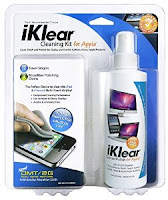Impression is one of the key components of your business’
success. Since it is important to feel and look good for your clients, it is
very important for owners to take note of even the simplest detail. However, as
reviews
and studies have concluded, most retailers start their business without knowing
the basics of the industry they are to undertake. If they have indeed done
their research, they have zero experience. This leads to mistakes causing many
retailers to jeopardize their own business.
Information Technology also has its own retail mistakes
which are oftentimes repeated despite the spontaneous change. Mobile retailing
industry, for instance, has its own share of failed fortune and
disappointments. It has attracted a lot of business newbies because of the rise
of mobile adaptation and the increasing growth of IT. Many people thought
venturing into this kind of business impulsively is easy since there is not
much to lose anyway. And more often than not, they are proven wrong.
To assist you in identifying mistakes done by your
predecessors, the Peterson Group,
distributor of mobile phone
accessories and laptop peripherals in Taiwan has listed some of the most
common of these mistakes which we have also observed from some of our retail
clients and includes tips on how you can best avoid them:
1.Dysfunctional
Displays
In order to impress the customers, many retailers stuff
more than half of their products within a few meters from the entrance. We call
this the decompression zone. Maria Hernz, author of “the Psychology of Buying”
has stated that “By the time the person is starting to engage with the physical
environment, some of the stuff you’ve put by the door is blown past”. After
touring around the busy center of Jakarta, Indonesia, she also said, “…these
store owners thought they attracting people. They are only crowding the eyes”.
She then suggests displaying a few items and using lighting to do the magic of
contrast.
2.Overcrowded
Merchandise
We are oftentimes aghast on the number of orders we get for
accessories. It is quite understandable when it is for the in-demand products
but for those which are not yet introduced in the market, it would seem like
our customers are preparing for a long hoard or something. Resist the urge to
order bulks of products and stop yourself from displaying too much merchandise
in one area.
3.Unappealing Sights
Watch out for some details which your customer might find
appealing such as electric warning signs on top of some open wires or open
restroom doors with the toilet seat open.





